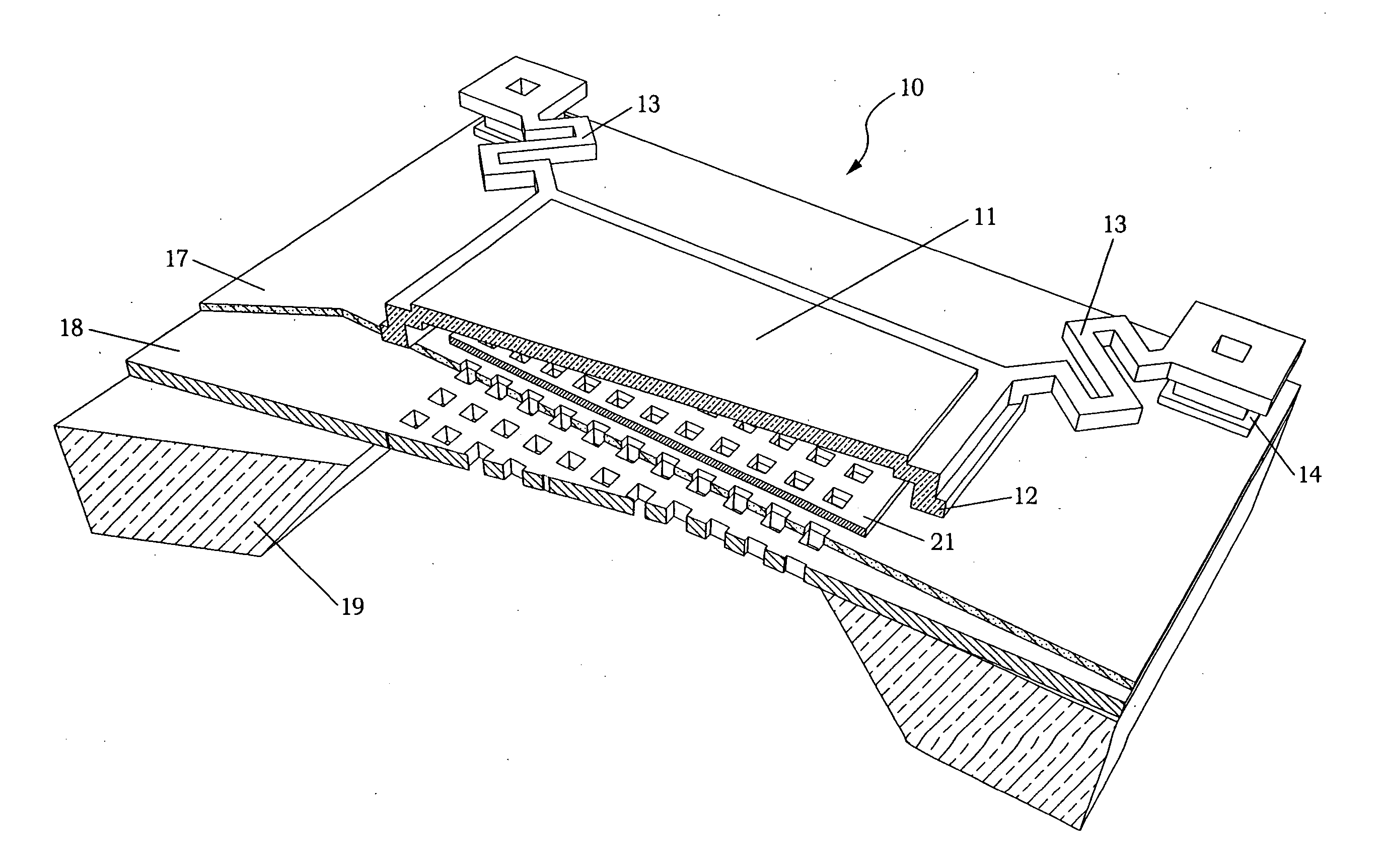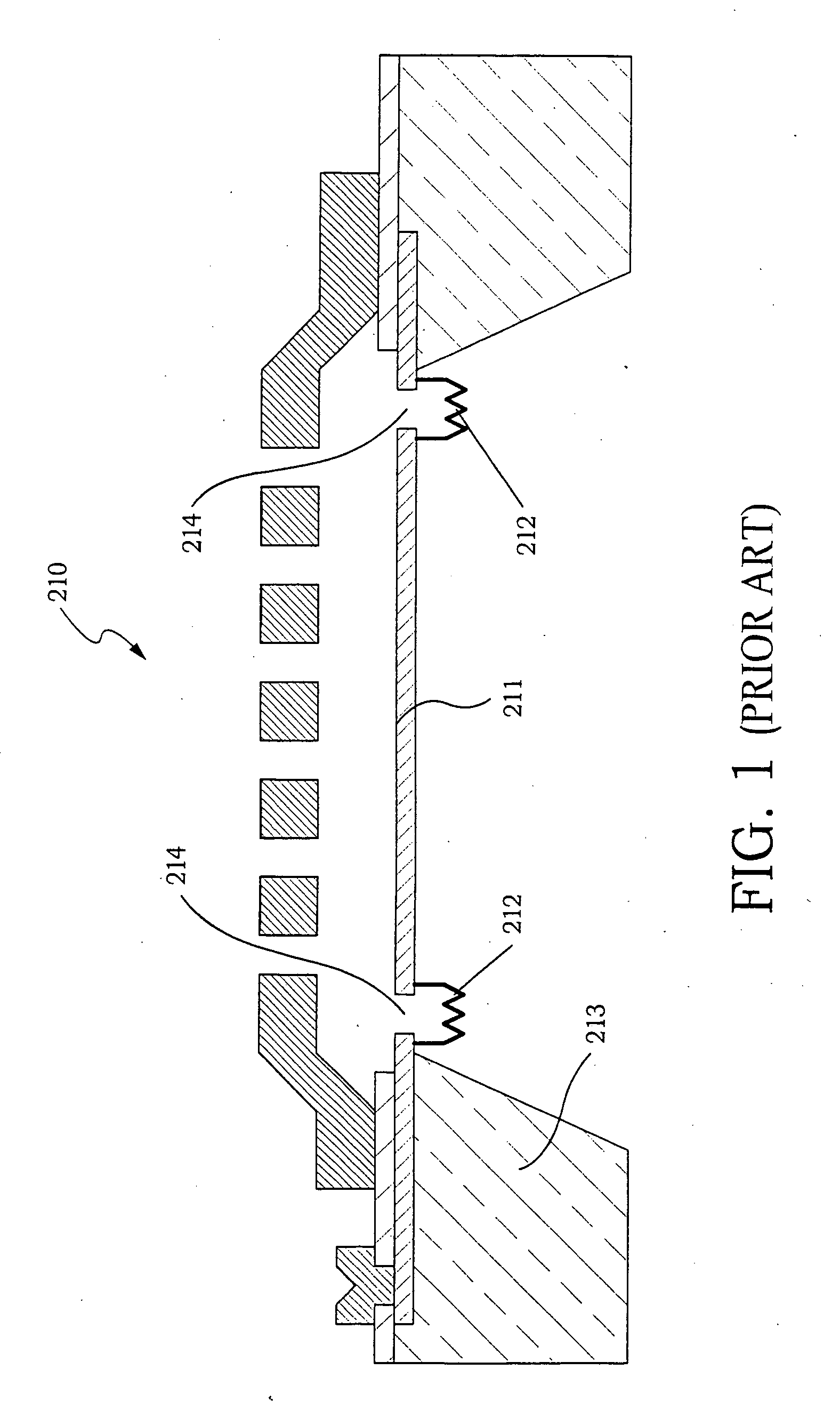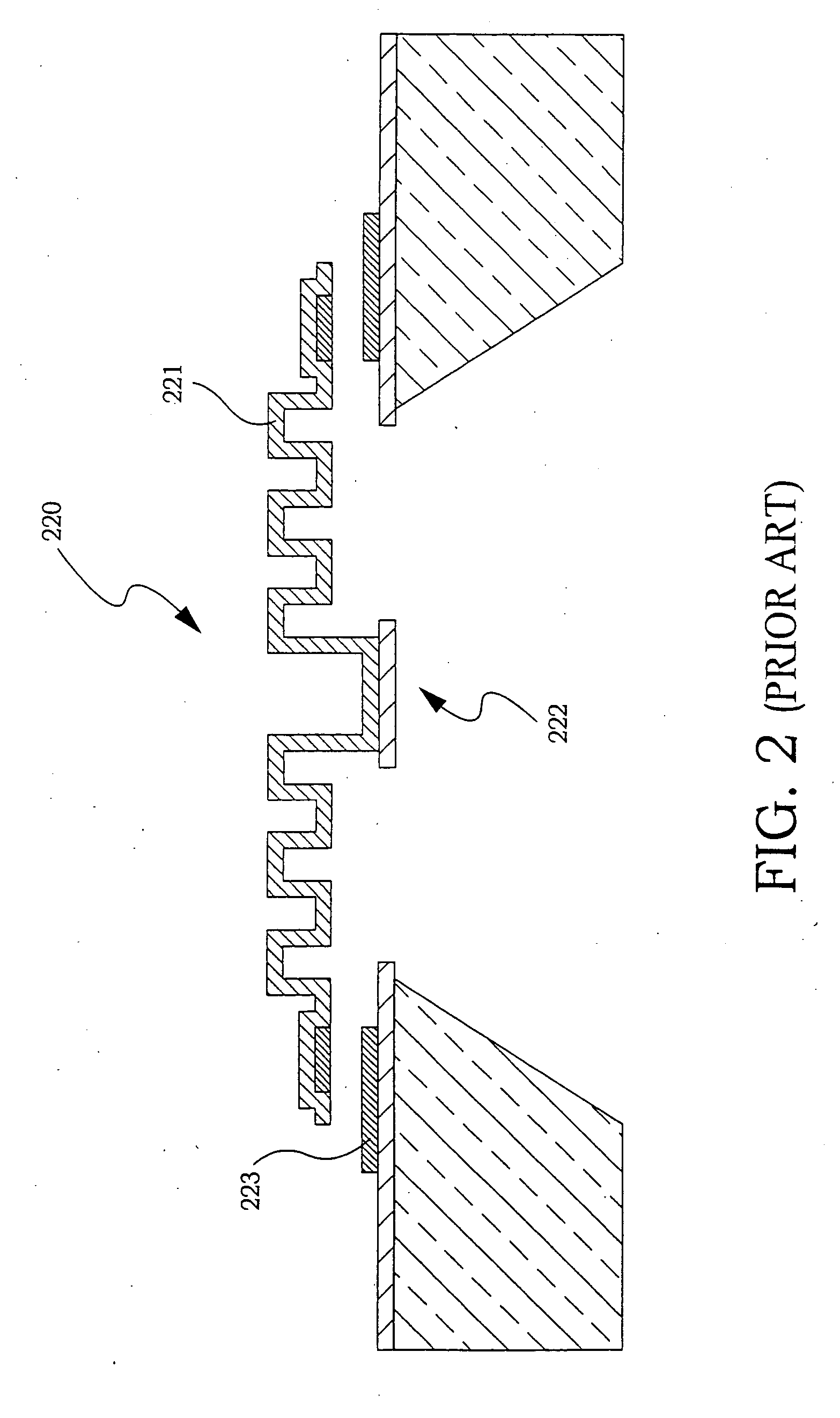Miniature condenser microphone and fabrication method therefor
a condenser microphone and microphone technology, applied in the field of microfabricated airborne acoustic microphones, can solve the problems of inherently difficult to protect the microphone, direct affecting the sensitivity of the microphone, and difficult to manufacture, so as to reduce the manufacturing cost
- Summary
- Abstract
- Description
- Claims
- Application Information
AI Technical Summary
Benefits of technology
Problems solved by technology
Method used
Image
Examples
Embodiment Construction
[0045] One embodiment of the microphone structure 10 according to the present invention is shown in the perspective view of FIG. 7 and the cross-sectional view of FIG. 8. An electrically conductive diaphragm 11 is attached to a supporting substrate 19 by a number of flexible suspension structures 13. Conductive diaphragm 11 can be a single layer conductive material, or be comprised of several layers of which at least one is conductive. Suspension structures 13 are attached to supporting substrate 19 using a conducting anchor material 14. Diaphragm 11 contains an annular indentation 12 at the perimeter, which in the initial position forms a narrow air gap 16 with supporting substrate 19. Supporting substrate 19 is coated with an electrically insulating layer 17, which isolates the conductive diaphragm 11 and a fixed counter electrode. A fixed counter electrode 21 is made of conductive layer 14, insulator 17, and a bulk layer 18. The purpose of bulk layer 18 is to provide sufficient m...
PUM
| Property | Measurement | Unit |
|---|---|---|
| DC bias voltage | aaaaa | aaaaa |
| corner frequency | aaaaa | aaaaa |
| corner frequency | aaaaa | aaaaa |
Abstract
Description
Claims
Application Information
 Login to View More
Login to View More - R&D
- Intellectual Property
- Life Sciences
- Materials
- Tech Scout
- Unparalleled Data Quality
- Higher Quality Content
- 60% Fewer Hallucinations
Browse by: Latest US Patents, China's latest patents, Technical Efficacy Thesaurus, Application Domain, Technology Topic, Popular Technical Reports.
© 2025 PatSnap. All rights reserved.Legal|Privacy policy|Modern Slavery Act Transparency Statement|Sitemap|About US| Contact US: help@patsnap.com



